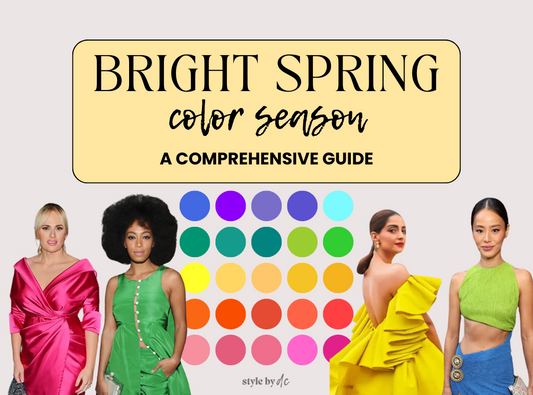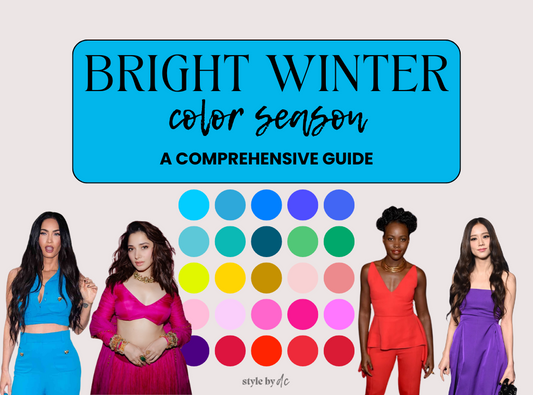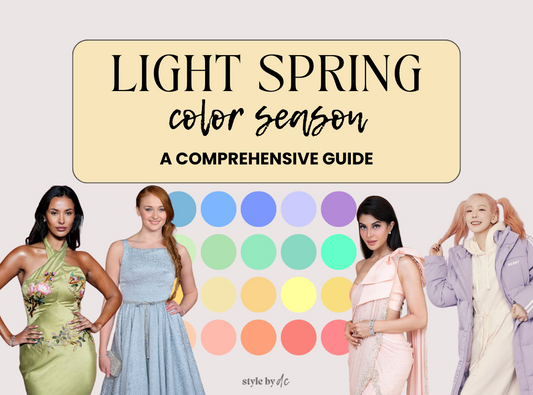If you’ve ever fallen down a color analysis rabbit hole online, you’ve probably noticed that not everyone agrees on how many “seasons” there actually are. Four? Twelve? Sixteen? No wonder it gets confusing.
I practice the 16-season system because it gives more nuance and flexibility. But I get a lot of the same questions from clients and readers, so let’s break them down here!
Q: What different seasons are in the 16 season system?
Spoiler - there are actually several versions of the 16 season system. While they are based on the same colour theory principles, the layout and names are different across different versions. For a full breakdown of the different 16 season color analysis systems out there, check out my comprehensive guide.
Q: What’s the difference between the 12-season and 16-season systems?
Most of the 16-season systems are basically the 12 seasons you may already know… plus four “in-between” categories. This is to add a bit more flexibility and nuance to the already popular 12 season system.
Let’s use an example to illustrate what I mean. Let’s say someone knows that cool colours suit them and that they have a cool undertone - but they are torn between True Summer and True Winter. True Summer is a bit too soft and grey and True Winter is a bit too bright for them. Enter two additional seasons (or options) from the 16 season system I practice: Deep Summer and Soft Winter. Deep Summer takes the cool, soft and light colours of True Summer and deepens them a bit. Soft Winter takes the cool, deep and clear tones of True Winter and softens them a bit, adding a touch of grey.
Other 16 season systems have different “in between” seasons - but the practice is the same. To offer more variety and nuance between seasons.
So if you’ve ever felt like your colours lean one way but not fully, this is where the extra four can really help, regardless of the system.
Q: Why can’t I find palettes for all 16 seasons?
Short answer: because there isn’t just one “official” version. Different analysts define the 16 differently, which makes resources harder to find.
That’s why I’ve created my own palettes for the version I practice. My take includes the four “bridge” seasons: Soft Spring, Soft Winter, Deep Summer, and Light Autumn. If you’re in one of those, you’ll find resources here you won’t see in many other places.
Q: Is the 16-season system more accurate than the 12?
Not necessarily. Both can be accurate depending on the analyst’s eye. The 16-season method just gives a bit more flexibility for people who sit between two categories.
Think of it this way: the 12-season system works well if you fit cleanly into one. If you’ve tried to self-analyze before or have had a professional analysis that felt off - it could be that you needed the extra variety of the 16 season system.
Q: Why do some systems only have 4 seasons?
That’s where it all started. Four seasons — one for each season of the year.
But real people don’t all fit into just four categories. That’s why the 12-season system was created, and eventually the 16. Each version is just a refinement of the same colour theory principles.
Q: Do I need a 16-season analysis if I’ve already had a 12-season one?
Not always. If your 12-season analysis felt spot-on, you don’t need to redo it.
But if you’ve been stuck between two seasons or your palette never felt like an “eff yes,” the 16-season analysis can give you that clarity. Also, if you’re a colour theory nerd like I am, you may be drawn to the 16 season system because it can go a bit deeper into the dimensions of colour.
At the end of the day, the number of seasons isn’t what matters most. What matters is whether you walk away feeling like you finally understand your best colours and how to use them in real life.
Colour analysis should make getting dressed easier, more fun, and more you.



